Two same calligraphies by Liang Emperor Mu:Fragment-ISYU
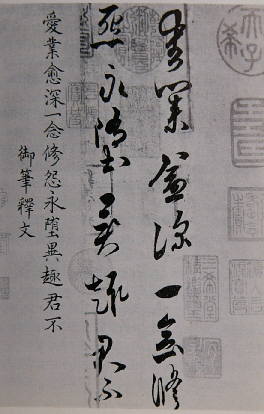 FUJII-YURINKAN
FUJII-YURINKAN
|
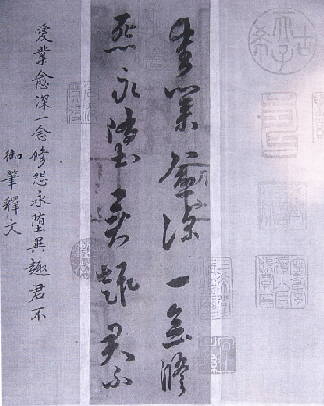 GEI-TIN-DO
GEI-TIN-DO
|
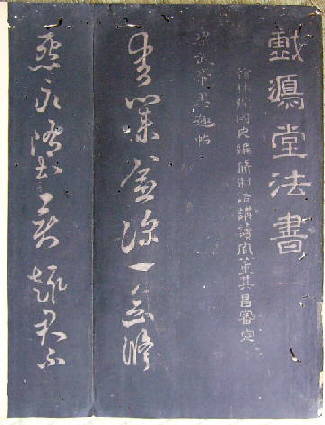 KE-KO-DO (later re-edition)
KE-KO-DO (later re-edition)
|
Both calligraphies likes together. The third is rubbing
after publishing in Later Ming dynasty.
Left is stored in FUJII-YURINKAN, Kyoto, Japan.
Center was stored in Taiwan Private Collection,
Whis is better,?
It is almost impossible to find the original Calligraphies by famous 4-6th centuries calligraphers. Hence, godd replica/copies are highly estimated. Some good copies by Tang dynasty copiests are noted in National Treasures.
But in the case of emperor-Mu, we have no standard speciment, so it is difficult to
think which be closer to the original.
I put the problem: which is in the Qing dynasty court? Both carry the seals , if one has genuine seals, it can back to llate 17th century at least.
Data
-
FUJII-YURINKAN version
light grey paper,25.5x6.9cm, Recent Provenannce Kyoto,Japan.
-
Taiwan version.
26cm x 7.8cm, Recent Provenannce Unknown.
Comparing with genuine seals from Red-CLiff ODE by Su-SHI (now in National Palace Museum, Taipei) and Two letters by Lin Pu (now in National Palace Museum, Taipei) , It seems clear that the seals of Taiwan version be wrong. Perhaps, the Yurinkan version should be former Qing dynasty treasure. The sorts and positions of faked seals are identical to the Yurinkan's, so all seals on the Taiwan version was added after Yurinkan's. When it was done is after 20th century.
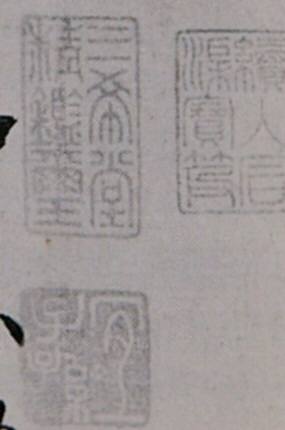 FUJII-YURINKAN version
FUJII-YURINKAN version
|
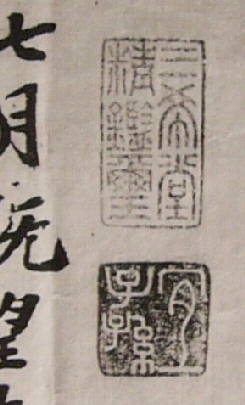 Su-Shi Redcriff ODE Part 1
Su-Shi Redcriff ODE Part 1
|
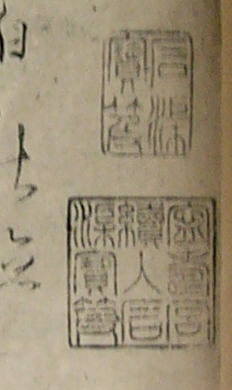 Lin-Po letters
Lin-Po letters
|
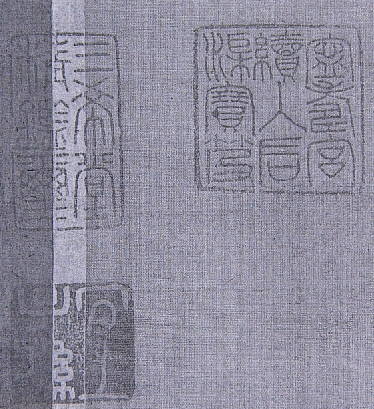 GEI-TIN-DO version
GEI-TIN-DO version
|
 Su-Shi Redcriff ODE Part 1
Su-Shi Redcriff ODE Part 1
|
 Lin-Po letters
Lin-Po letters
|
However, it is another problem whether is better/ closer to the original 5-6th century work . Par example, Suppose that a fragment was cut from long Tang copy at Ming dynasty, and was embelished with fake seals. The value of itself might be matchless. But many evidences should support the Yurinkan version, I feel.
 FUJII-YURINKAN
FUJII-YURINKAN
 GEI-TIN-DO
GEI-TIN-DO
 KE-KO-DO (later re-edition)
KE-KO-DO (later re-edition)
 FUJII-YURINKAN
FUJII-YURINKAN
 GEI-TIN-DO
GEI-TIN-DO
 KE-KO-DO (later re-edition)
KE-KO-DO (later re-edition)
 FUJII-YURINKAN version
FUJII-YURINKAN version
 Su-Shi Redcriff ODE Part 1
Su-Shi Redcriff ODE Part 1
 Lin-Po letters
Lin-Po letters
 GEI-TIN-DO version
GEI-TIN-DO version
 Su-Shi Redcriff ODE Part 1
Su-Shi Redcriff ODE Part 1
 Lin-Po letters
Lin-Po letters